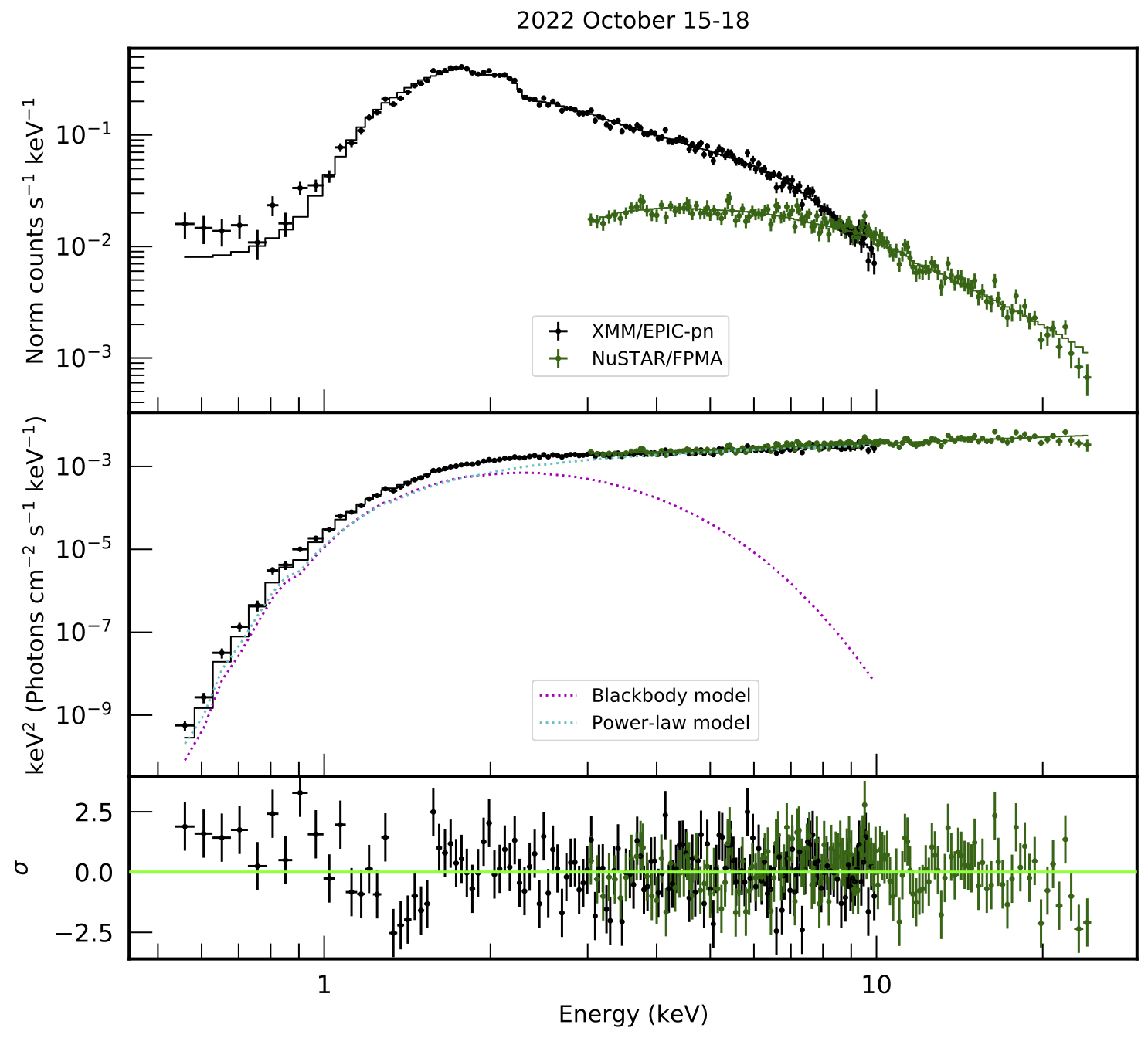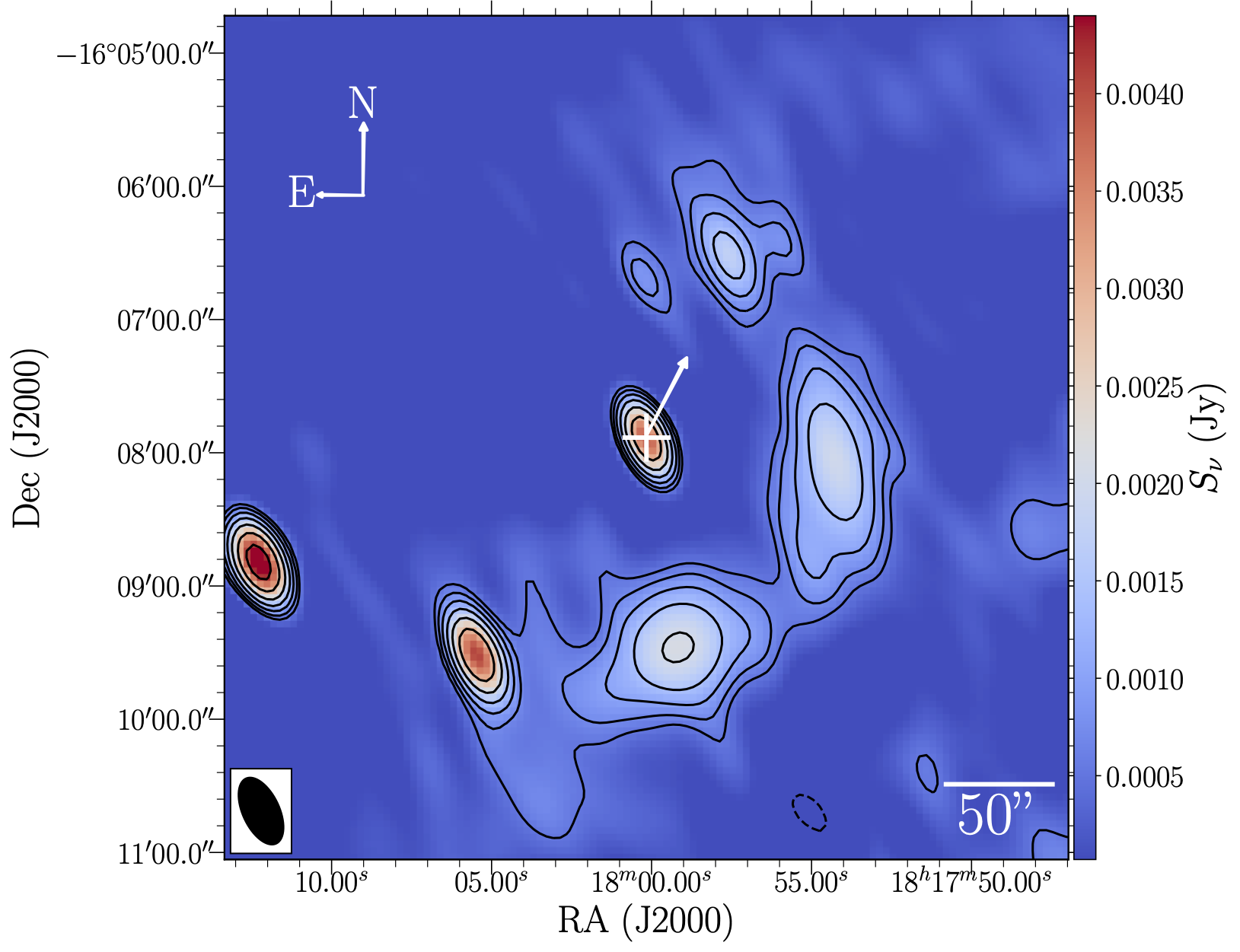An X-Ray and Radio View of the 2022 Reactivation of the Magnetar SGR J1935+2154
Ibrahim, A. Y., et al.
The Astrophysical Journal, 965:87
We present X-ray and radio observations following SGR J1935+2154's October 2022 outburst. Using XMM-Newton and NuSTAR data, we found persistent emission well-described by a blackbody (kTBB ≈ 0.4 keV, RBB ≈ 1.9 km) plus power-law model up to 25 keV. We detected X-ray pulsations and measured a spin-down rate of Ṗ = 5.52×10−11 s s−1, 3.8 times larger than after its 2014 outburst. Despite 92.5 hours of radio monitoring with 25-32m telescopes, no radio bursts or pulsed emission were detected.

